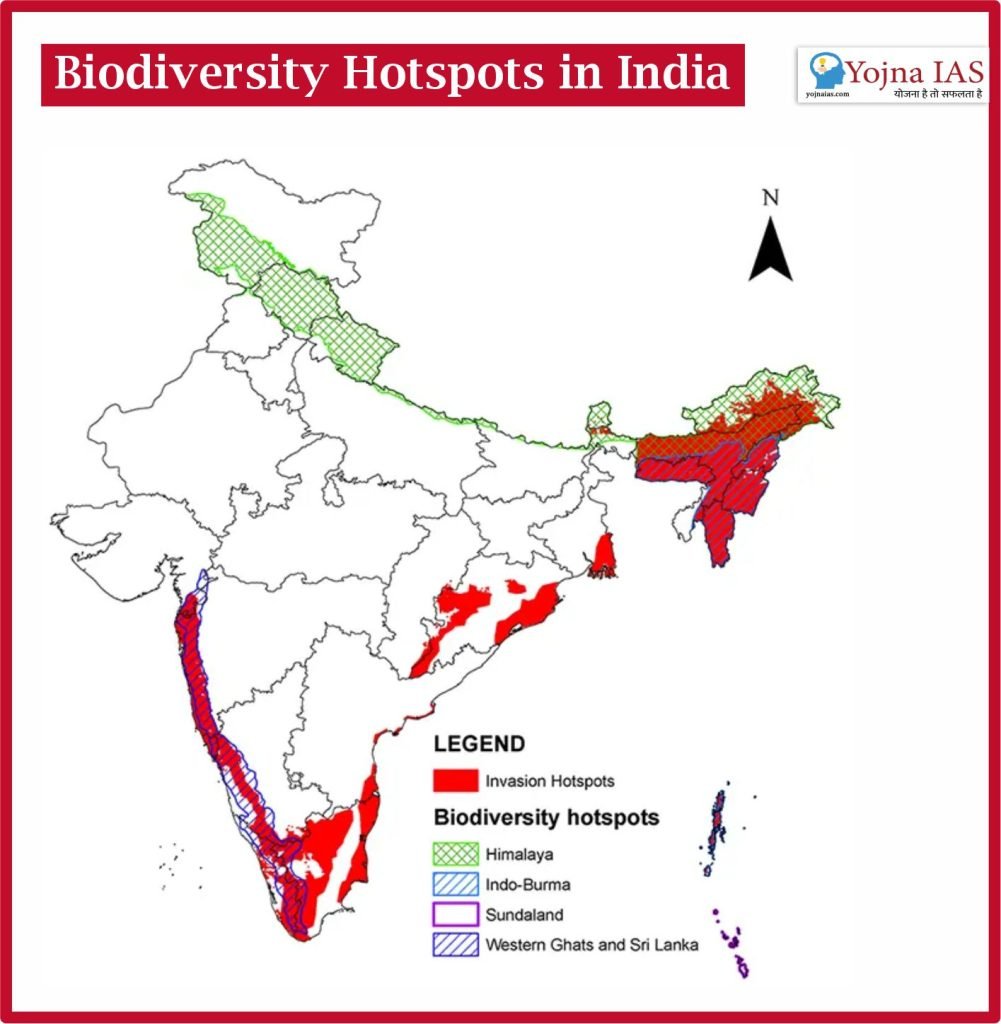07 Feb 2024 Humboldt’s Enigma
This article covers ‘Daily Current Affairs’ and the topic details of “Humboldt’s Enigma”. This topic is relevant in the “Environment & Ecology” section of the UPSC CSE exam.
Why in the News?
In recent years, Humboldt’s enigma has received more attention in the study of ecology as researchers seek to comprehend the unexpected richness seen in alpine habitats, contradicting conventional wisdom.
About Humboldt’s Enigma
- For ages, explorers and naturalists have sought to identify the variables that contribute to biodiversity concentration.
- Alexander von Humboldt (1769-1859) was a polymath who observed natural occurrences in subjects such as geography, geology, meteorology, and biology.
- Humboldt’s varied research suggested a link between temperature, height, and humidity on the one hand and species occurrence patterns – or biodiversity – on the other.
- Two centuries later, a group of biogeographers, or scientists who study the relationship between diversity and location, employed new methods to reexamine the drivers of biodiversity.
- They provided their own account of the relationship between biodiversity and mountains, dubbed Humboldt’s enigma.
What is Humboldt’s enigma?
- Humboldt’s enigma suggests that biodiversity is not limited to Earth’s tropical regions.
- It implies that regions other than the tropics, such as hilly areas, have tremendous biodiversity.
- For example, in India, biodiversity is not limited to the tropical regions of MP, Chhattisgarh, and the Western Ghats but also includes such areas as the eastern Himalayas, where climate variations and a diverse geological makeup contribute to abundant biodiversity.
Drivers of Mountain Biodiversity:
-
Geological Processes:
- Mountains serve as ‘cradles’ and’museums’ for biodiversity.
- Uplifts and other geological events produce new environments in which new species can arise (‘cradles’).
- Furthermore, climatologically stable mountains act as ‘ museums,’ preserving species for long periods.
- The Northern Andes, notably Chimborazo, exemplify this by spanning a wide diversity of biomes across short distances.
-
Geological Heterogeneity:
- Mountains with firm geological heterogeneity have increased biodiversity.
- The various compositions of rocks create various habitats, promoting biological diversity.
- This occurrence is especially common in tropical mountains, adding to their distinctive biological tapestry.

Eastern Himalaya: A Case Study
- The Eastern Himalaya presents an anomaly in terms of biodiversity beyond the tropics. The Eastern Himalaya has extraordinary variety, contradicting the usual tropical biodiversity paradigm.
- Climate variability and geological heterogeneity contribute to high biodiversity.
- Different temperatures and rainfall amounts on the same mountain support a variety of biomes.
- According to the World Wildlife Fund, the Eastern Himalayas support thousands of diverse species, including over 10,000 plants, 900 bird species, and 300 animal species. Many of them are either endangered or highly endangered.
- Its meadows host the densest populations of Asian elephants, Bengal tigers, and one-horned rhinos. Its mountains shelter snow leopards, Himalayan black bears, takins, red pandas, and golden langurs, while its waterways are home to the world’s rarest dolphins (Gangetic).
Challenges in identifying the pattern of biodiversity richness:
- A significant restriction of scientists’ attempts to explain biodiversity patterns is a lack of fine-grained data on where species appear.
- There is a shortage of research & development.
- Several locations, particularly in India, remain understudied.
- We cannot expect to comprehend a location’s genuine biodiversity without employing contemporary genomic technologies.
Download Yojna daily current affairs eng med 7th feb 2024
Prelims practice questions
Q1) If you travel through the Himalayas, you are likely to see which of the following plants are naturally growing there. (UPSC Prelims-2014)
1) Oak
2) Rhododendron
3) Sandalwood
Select the correct answer using the code given below:
a) 1 and 2 only
b) 3 only
c) 1 and 3 only
d) 1, 2 and 3
ANSWER: A
Q2) Which biome is known for having the highest biodiversity?
a) Desert
b) Rainforest
c) Tundra
d) Grassland
Answer: B
Q3) What is the role of keystone species in maintaining biodiversity?
a) They are the most abundant species in an ecosystem.
b) They have no impact on the ecosystem.
c) They play a crucial role in maintaining the structure and function of an ecosystem.
d) They are invasive species.
ANSWER: C
Mains practice questions
Q1) Describe the major biodiversity hotspots in India. Analyze the factors that contribute to the high concentration of species in these regions and discuss the conservation efforts being undertaken to preserve these hotspots.
I am a content developer and have done my Post Graduation in Political Science. I have given 2 UPSC mains, 1 IB ACIO interview and have cleared UGC NET JRF too.


No Comments